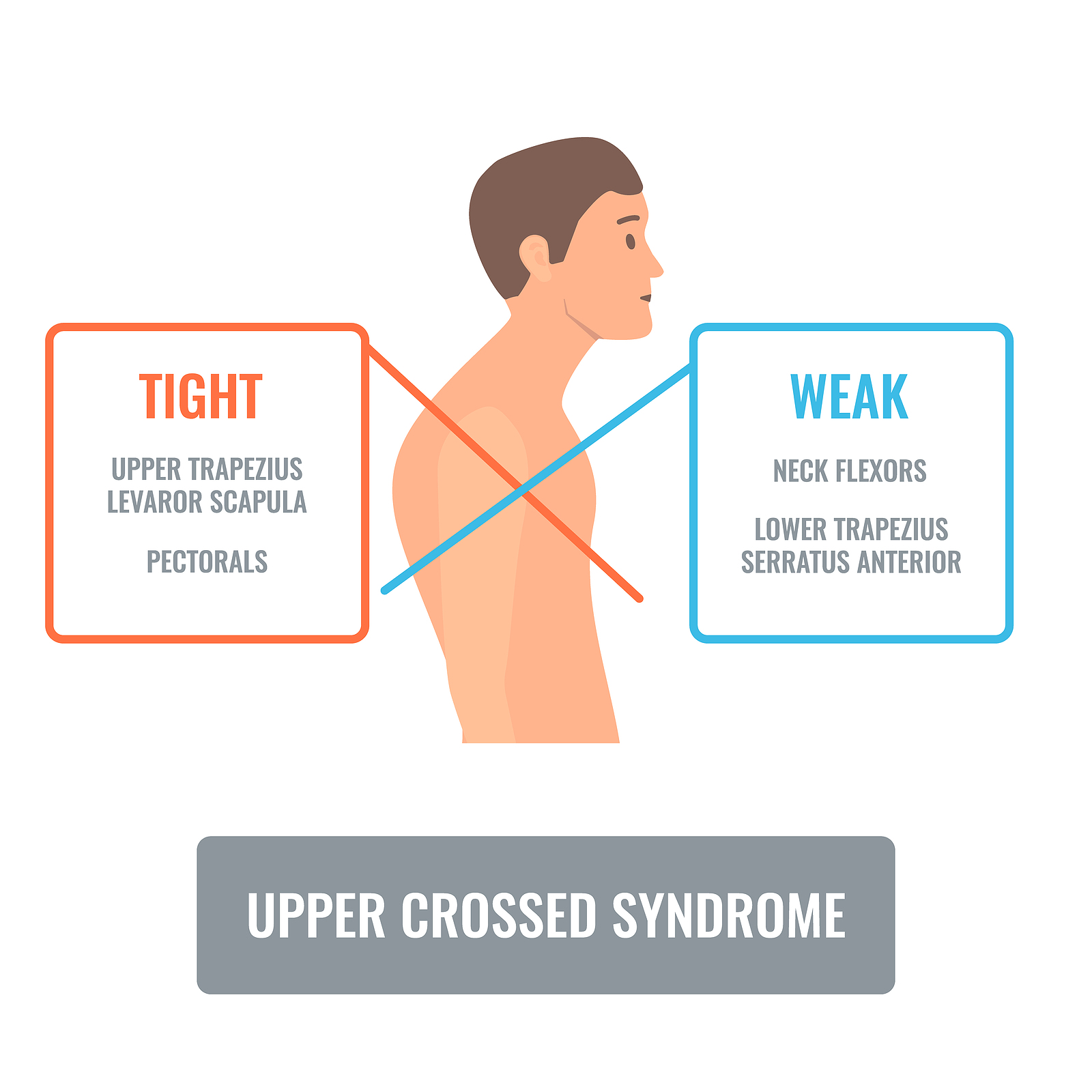 Upper Crossed Syndrome (UCS) is a muscular imbalance pattern that commonly affects individuals who have a sedentary lifestyle or spend long hours at a desk or computer. This condition results from overuse of some muscles and underuse of others, leading to a complex chain of events that can cause pain, stiffness, and discomfort in the neck, shoulders, and upper back.
Upper Crossed Syndrome (UCS) is a muscular imbalance pattern that commonly affects individuals who have a sedentary lifestyle or spend long hours at a desk or computer. This condition results from overuse of some muscles and underuse of others, leading to a complex chain of events that can cause pain, stiffness, and discomfort in the neck, shoulders, and upper back.
The name “Upper Crossed Syndrome” comes from the crossing of two muscle groups: the upper trapezius and levator scapulae, which are overactive and tight, and the deep neck flexors and lower trapezius, which are weak and underactive. This imbalance causes the head to jut forward and the shoulders to round, resulting in a hunched posture.
Symptoms of Upper Crossed Syndrome can vary from person to person and can range from mild discomfort to severe pain. Some common symptoms include neck pain and stiffness, headaches, shoulder pain and tightness, limited range of motion, and tingling or numbness in the arms and hands.
Massage therapy is an effective treatment option for Upper Crossed Syndrome. Massage therapists use various techniques to help alleviate pain, reduce muscle tension, and improve range of motion. Here are some ways massage therapy can benefit patients with Upper Crossed Syndrome:
- Relieves Muscle Tension and Pain: Massage therapy helps to relax tight and overactive muscles, such as the upper trapezius and levator scapulae. By applying pressure to these muscles, a massage therapist can help to release knots and tension, which can alleviate pain and discomfort.
- Improves Posture: Massage therapy can help to improve posture by lengthening tight muscles and strengthening weak ones. By working on the deep neck flexors and lower trapezius, massage therapists can help to bring the head back into proper alignment and reduce the hunched posture that is common with Upper Crossed Syndrome.
- Increases Range of Motion: Massage therapy can help to increase range of motion by improving flexibility and reducing muscle tension. By working on the muscles surrounding the neck, shoulders, and upper back, massage therapists can help to restore normal movement patterns, which can reduce pain and discomfort.
- Reduces Stress and Anxiety: Massage therapy can also help to reduce stress and anxiety, which can be a contributing factor to Upper Crossed Syndrome. By promoting relaxation and reducing tension in the muscles, massage therapy can help to reduce overall stress levels and improve mental health.
In conclusion, Upper Crossed Syndrome is a common condition that can cause pain and discomfort in the neck, shoulders, and upper back. Massage therapy is an effective treatment option for this condition, as it can help to alleviate pain, improve posture, increase range of motion, and reduce stress and anxiety. If you are experiencing symptoms of Upper Crossed Syndrome, consider consulting with a massage therapist to see how massage therapy can benefit you.


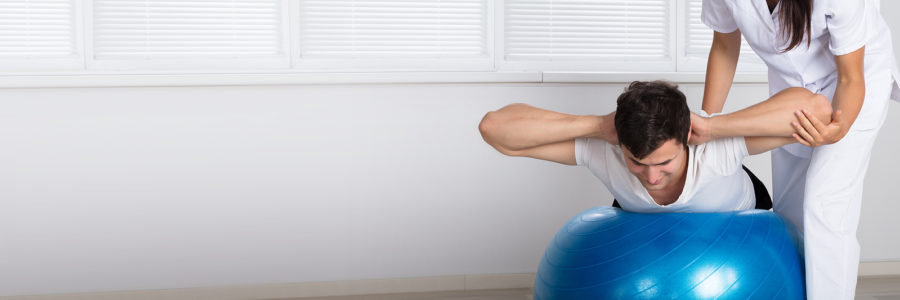
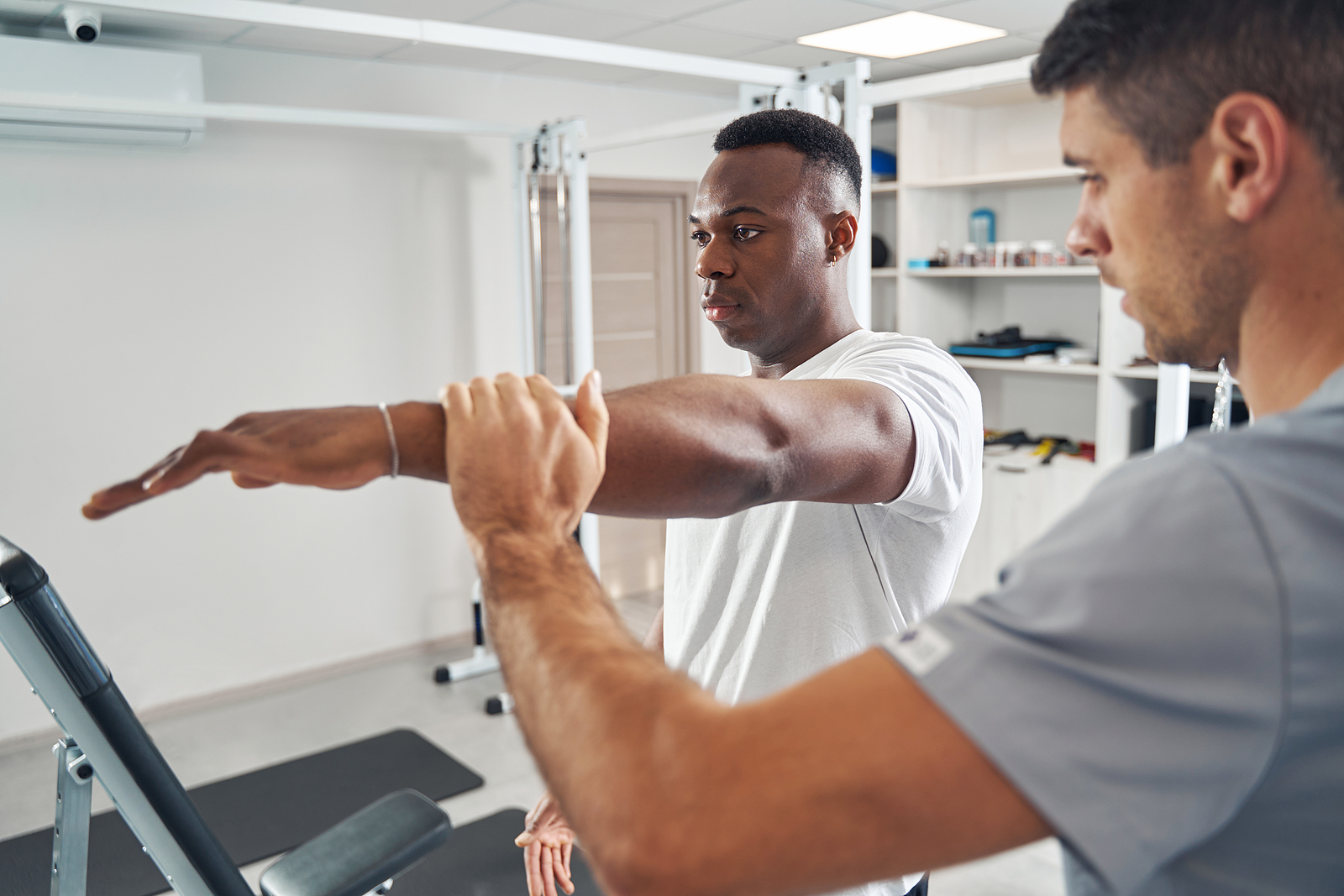 As a complementary and
As a complementary and 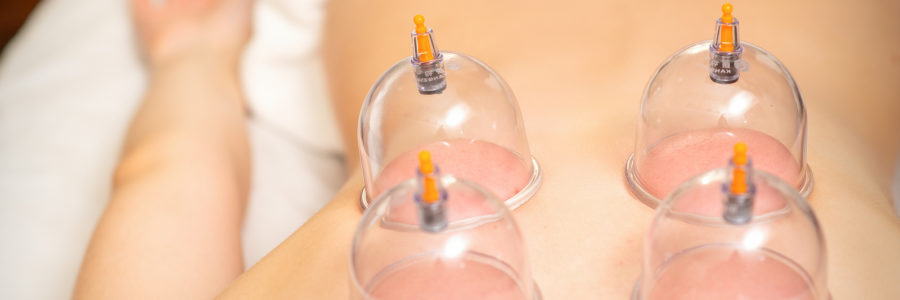
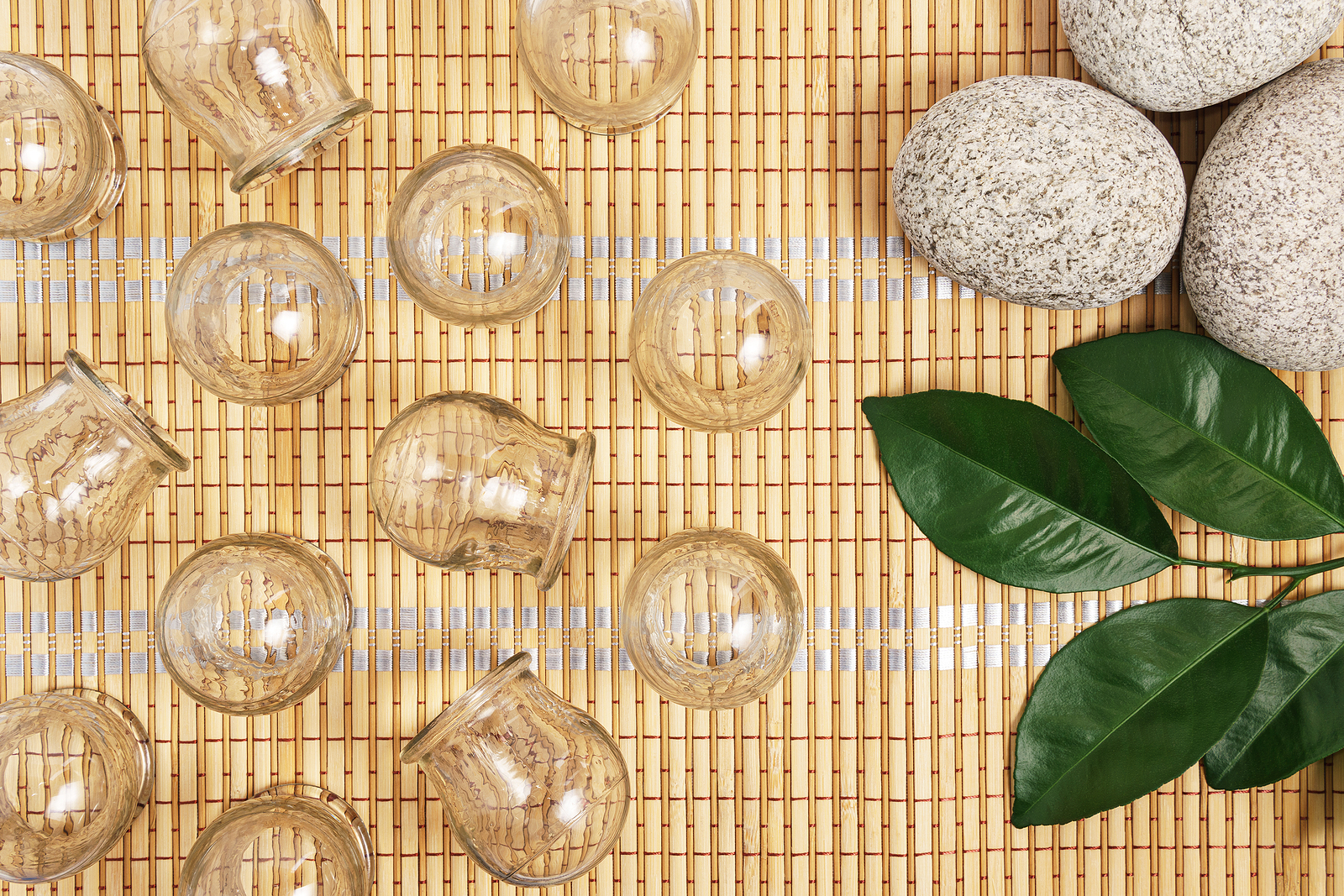 Cupping therapy is an ancient form of alternative medicine that has been used for centuries to treat various conditions. It involves placing cups on the skin to create a vacuum effect that draws the skin and underlying tissues up into the cup. Cupping has gained popularity in recent years, especially among athletes, as a way to treat sports injuries and improve performance. In this blog post, we will explore cupping therapy for sports injuries and how it can benefit athletes.
Cupping therapy is an ancient form of alternative medicine that has been used for centuries to treat various conditions. It involves placing cups on the skin to create a vacuum effect that draws the skin and underlying tissues up into the cup. Cupping has gained popularity in recent years, especially among athletes, as a way to treat sports injuries and improve performance. In this blog post, we will explore cupping therapy for sports injuries and how it can benefit athletes.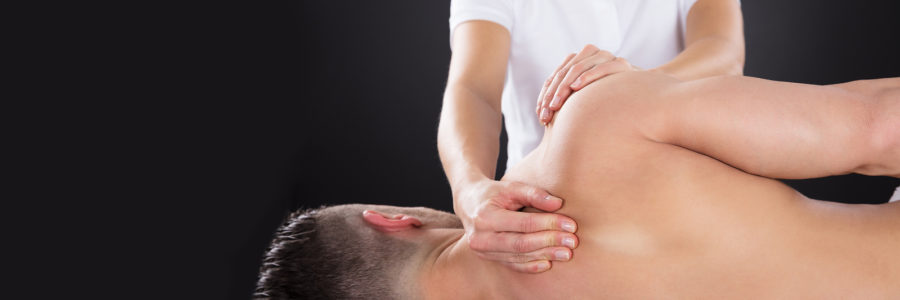
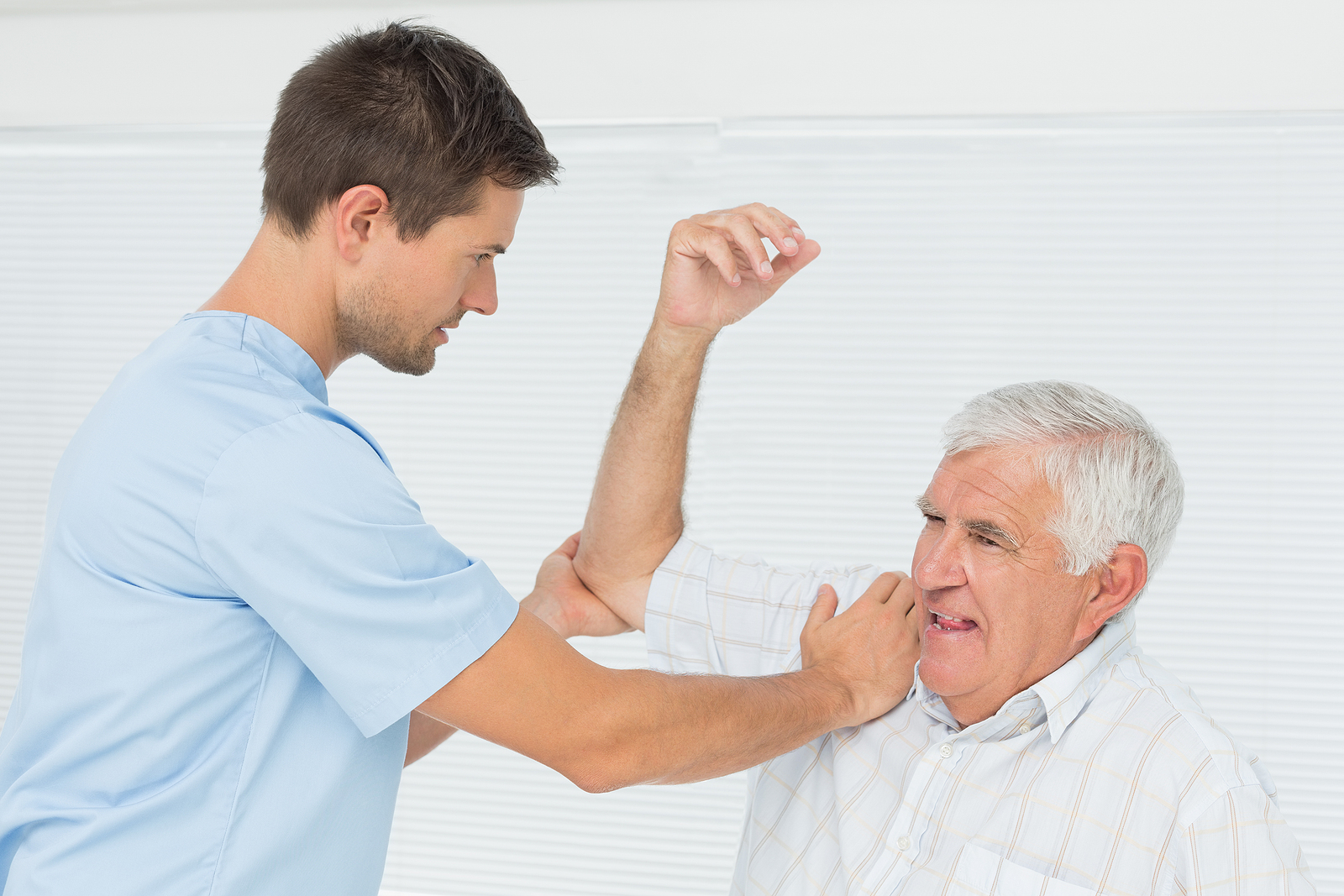
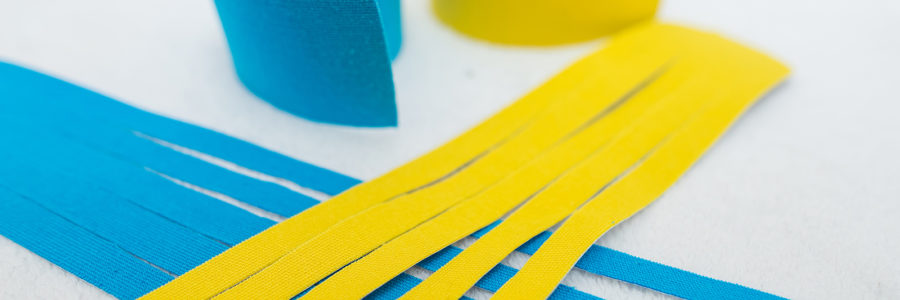
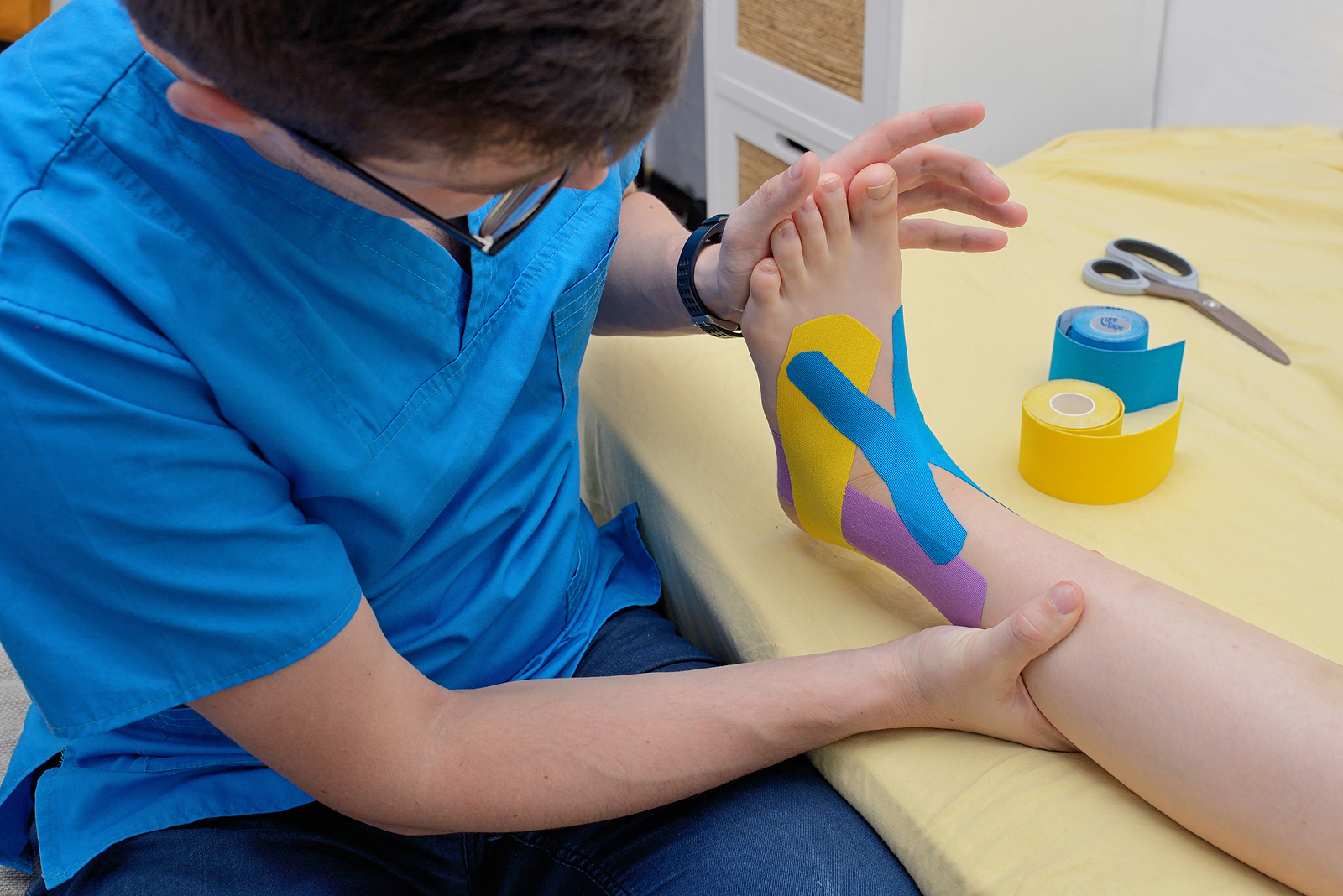
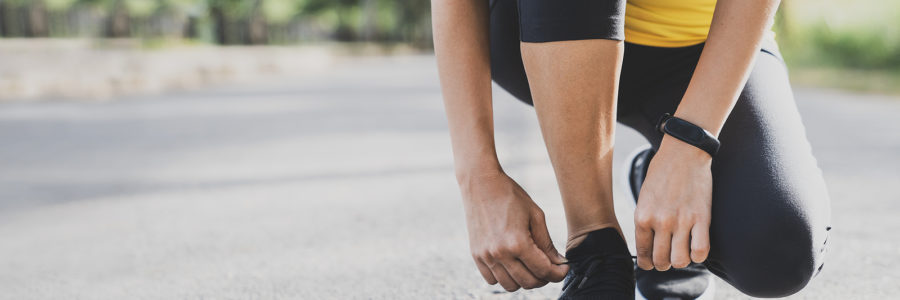
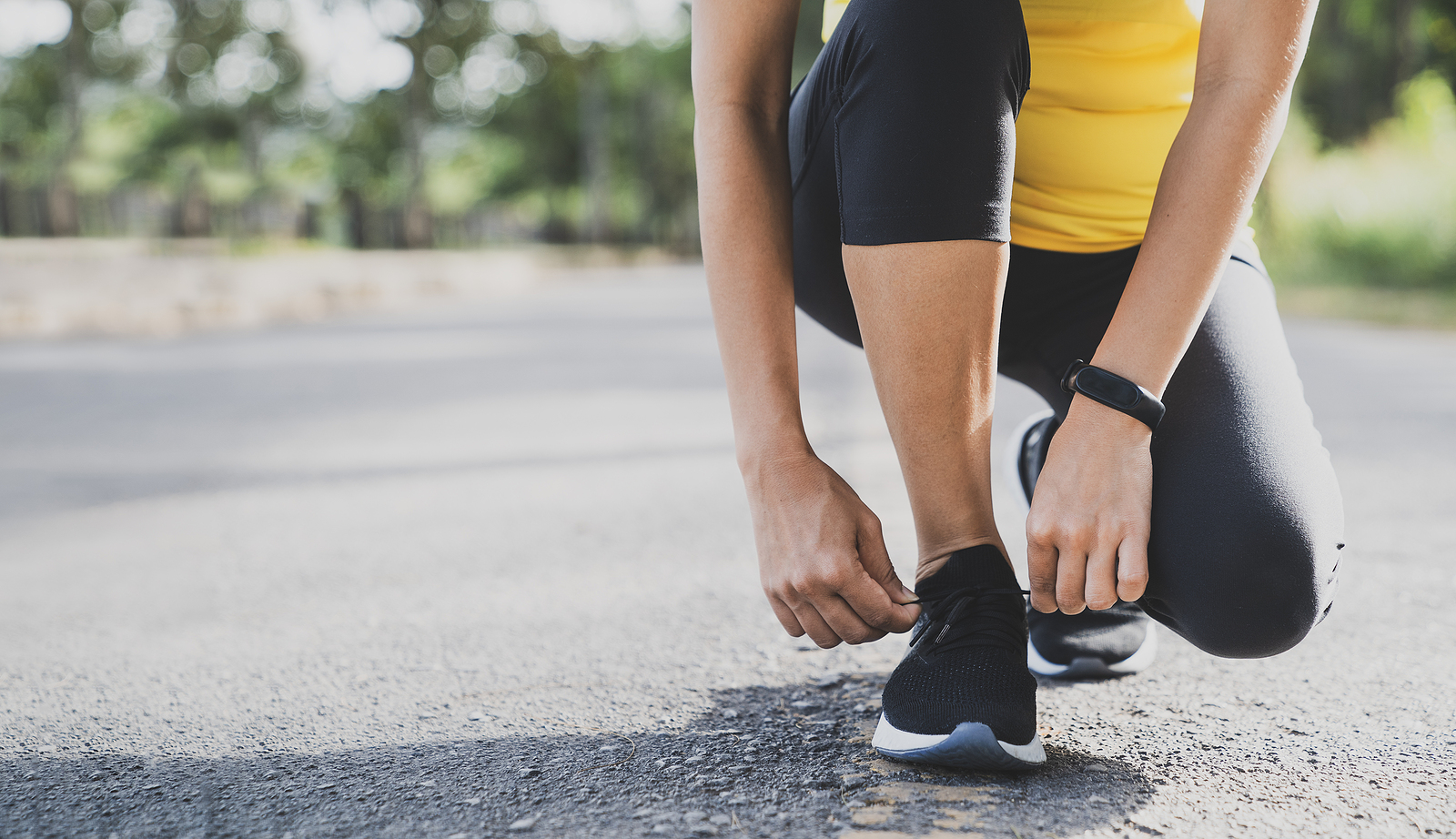 There is no one-size-fits-all when it comes to the best running or exercise shoes, so finding one can be a daunting task. What makes the best exercise shoes may differ from one individual to the other depending on a lot of factors.
There is no one-size-fits-all when it comes to the best running or exercise shoes, so finding one can be a daunting task. What makes the best exercise shoes may differ from one individual to the other depending on a lot of factors.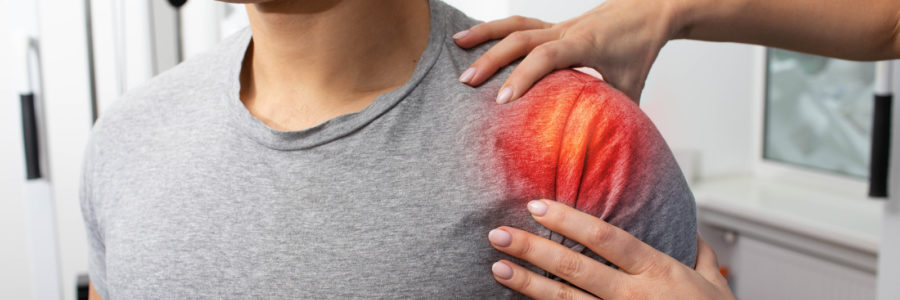
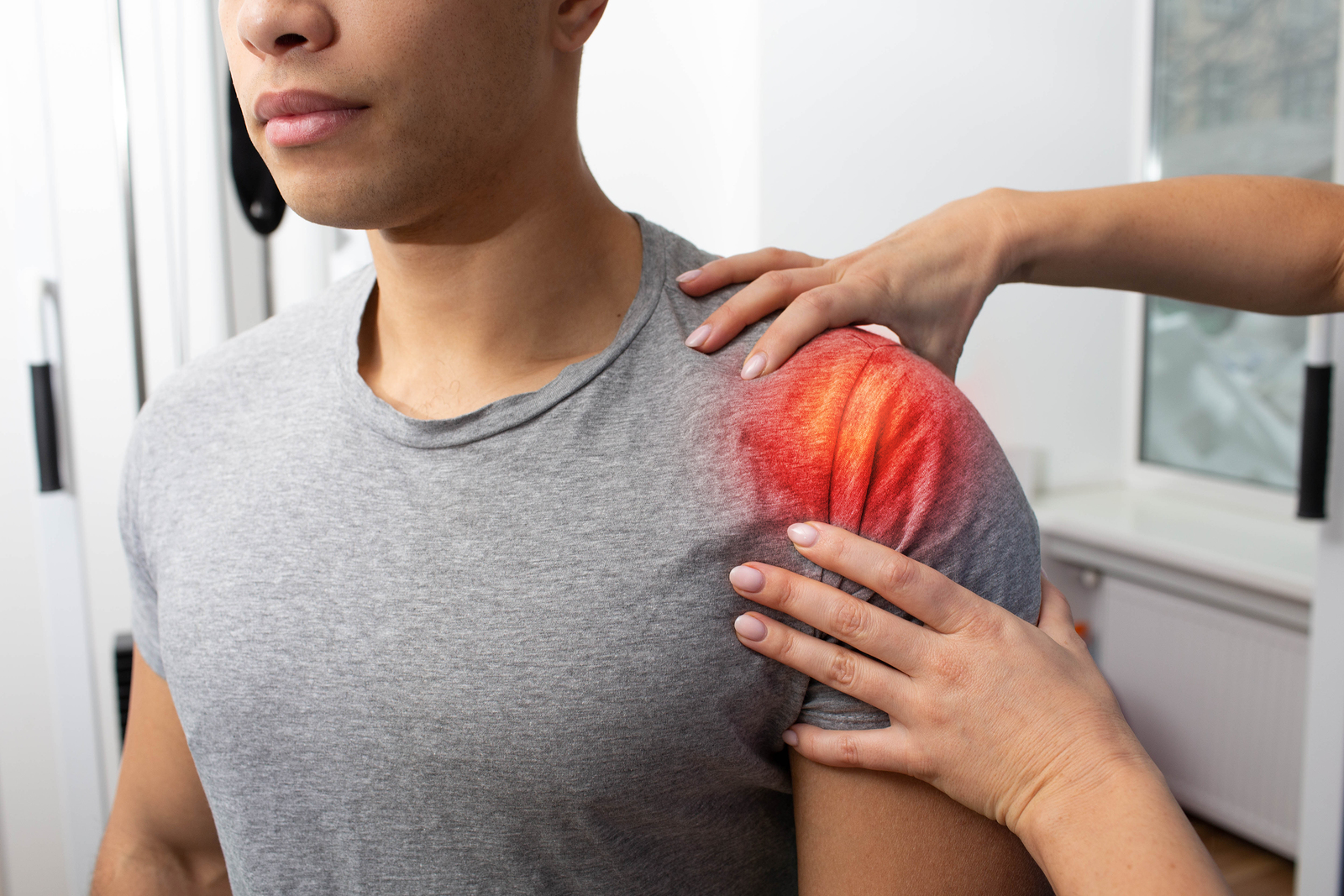
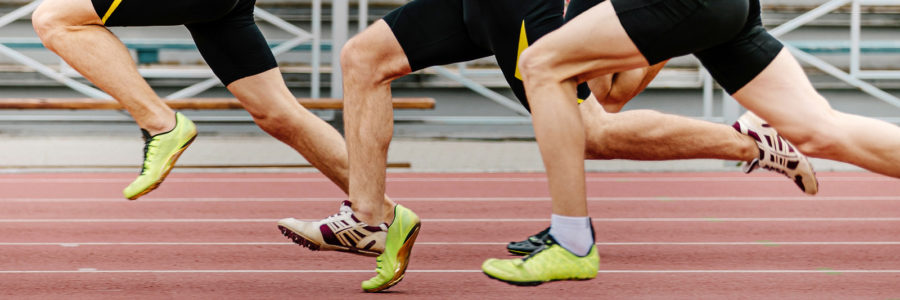
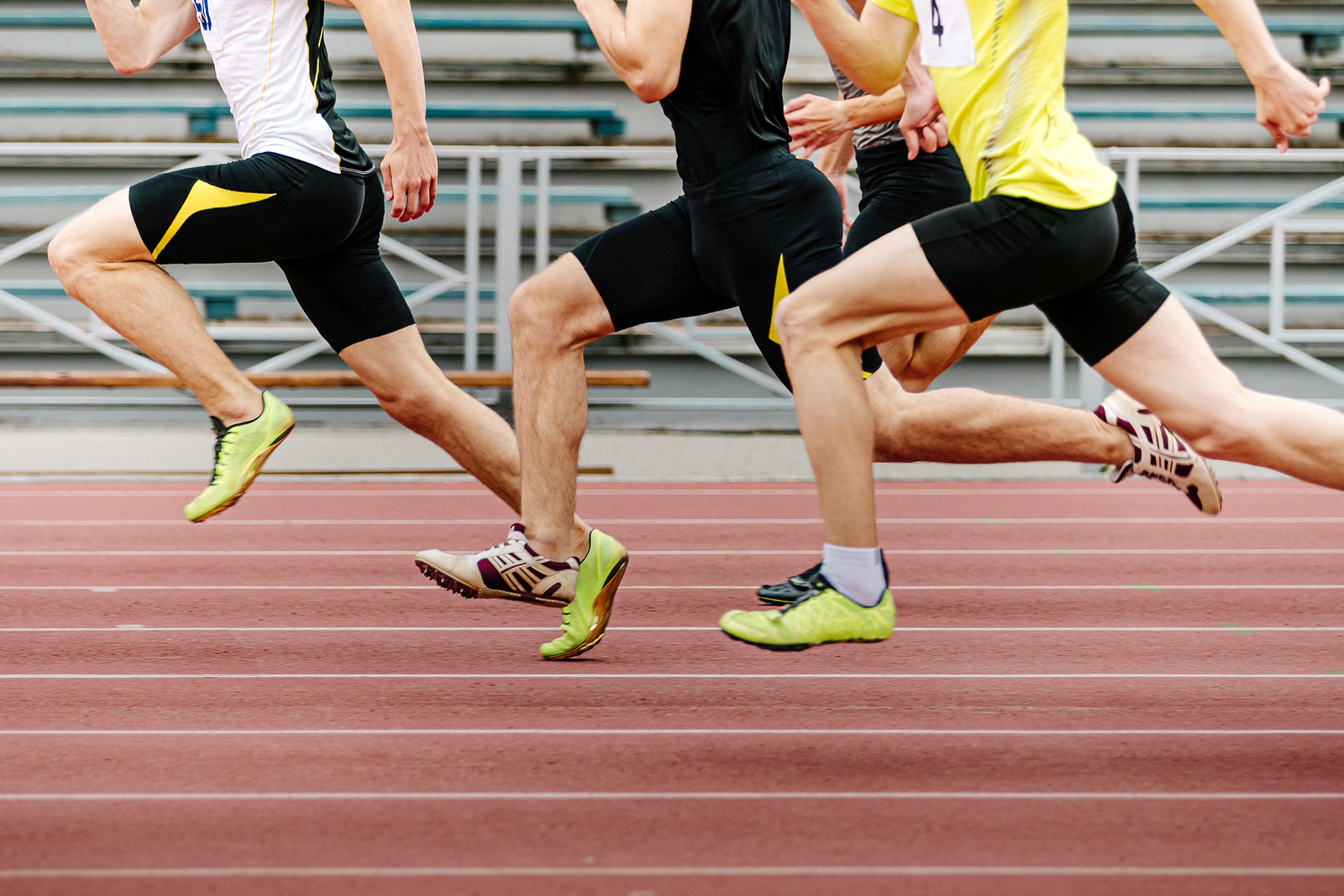 It takes strength, stamina, and yes, endurance, to be an endurance athlete. Taking part in these marathons, and triathlons and such sporting events requires training and preparation of both the mind and body.
It takes strength, stamina, and yes, endurance, to be an endurance athlete. Taking part in these marathons, and triathlons and such sporting events requires training and preparation of both the mind and body.